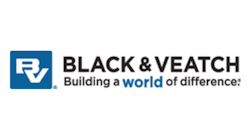Today, wastewater effluent is increasingly being regarded as a resource, recognized for the wealth of beneficial substances that it contains, including nutrients like phosphorus and nitrogen.
“From a sustainability point of view, I’ve always loved the idea of capturing nutrients, recovering them, making beneficial use of them,” said Dr. Andrew Shaw, a global practice and technology leader with Black & Veatch, during a recent interview. “What’s been fun is, in the last few years, I’ve seen it maturing. It’s not just a novel idea. There are several large utilities already doing it.”
He noted as a prime example the Ostara nutrient recovery project at Chicago Metropolitan Water Reclamation District’s Stickney plant. Opened in May 2016, the nutrient recovery facility enables the recovery of nitrogen and phosphorus from the wastewater stream for use as fertilizer. Getting these nutrients out of the effluent stream not only helps meet stringent discharge guidelines, it also reduces the buildup of struvite (nutrient scale that can clog pipes).
Black & Veatch’s Dr. Andrew Shaw discusses nutrient recovery trends with Angela Godwin.
The key to the success of these kinds of technologies is their ability to accomplish multiple objectives. Shaw sees that with nutrient recovery — it’s not a “one-trick pony.”“It helps with dewatering,” he pointed out. “We don’t get the nuisance of struvite in our pipes, all of that. So there are all these multiple benefits from doing phosphorus recovery and many of our clients are seeing that now.”
That’s an important factor when it comes to evaluating the business case for doing nutrient recovery. “You need to add in the cost/benefit from the other things and not just, say, the revenue stream from producing a fertilizer product or the cost savings from not having to remove the phosphorus from the main part of my plant,” said Shaw. “You need to look at what the benefits [are] in reduced maintenance on my dewatering, etc.”
There are several vendors now playing in the nutrient recovery market, Shaw observed. “That’s kind of a sign that it is maturing,” he said. But what’s also worth noting, he said, is work being done to recover brushite, another form of phosphorus but with calcium (instead of magnesium, like struvite).
Last fall, the Water Research Foundation (WRF) launched a research project to demonstrate a high-rate, pre-digestion phosphorus removal and recovery technology from Centrisys/CNP called CalPrex™.
According to a press release, CalPrex “incorporates a thickened sludge fermentation tank to increase the amount of soluble and reactive species of phosphorus, thereby increasing the recovery potential of that phosphorus.” With it, over 50 percent of soluble phosphorus can be diverted (in the form of brushite) from the methane digester and, ultimately, from resulting biosolids. It can subsequently be used as a slow-release phosphorus fertilizer.
Through its findings, WRF, along with several project partners, including the Milwaukee Metropolitan Sewerage District, Madison (Wisc.) Metropolitan Sewerage District, Denver’s Metro Wastewater Reclamation District, the Massachusetts Water Resources Authority, and Centrisys/CNP, aims to help water resource recovery facilities evaluate and benchmark state-of-the-art alternatives for removing phosphorus from sludge going to digesters. Results will be available soon and will be disseminated through the WRF LIFT Link platform.
“We’re at a mature phase in the market,” Shaw concluded. “It’s not just one product; there are other ideas that are out there and it’s a very fertile environment for that.”





